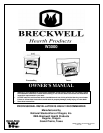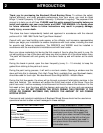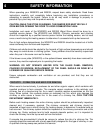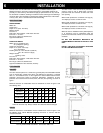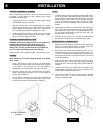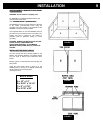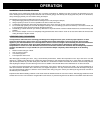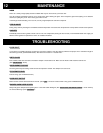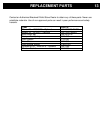
When operating your W3000FS and W3000I, respect basic safety standards. Read these
instructions carefully and completely before beginning any installation procedures or
attempting to operate the heater. Failure to do so may result in damage to property or
personal injury and may void the product warranty.
CAUTION: WHILE THE STOVE IS BURNING, THE DAMPER ROD MUST BE FULLY
OPEN BEFORE OPENING THE DOOR TO AVOID COMBUSTION FLASH.
Installation and repair of the W3000FS and W3000I Wood Stove should be done by a
qualified service person. The W3000FS and W3000I, Chimney connector and chimney
should be inspected by a qualified service person before the heating season, and at least
once a month during the heating season to determine if a creosote build up had occurred.
Due to high surface temperatures, the W3000FS and W3000I should be located out of traffic
areas and away from furniture and draperies.
Children and adults should be alerted to the hazards of high surface temperatures and should
stay away to avoids burns or clothing ignition. Young children should be carefully supervised
when they are in the same room as the heater.
If the blower cover plate (W3000FS) or the optional blower assembly have been removed for
service, they must be replaced prior to operating the heater.
WARNING: DO NOT OPERATE HEATER WITH THE GLASS PANEL REMOVED,
CRACKED OR BROKEN. REPLACEMENT OF THE PANEL SHOULD BE DONE BY A
LICENSED OR QUALIFIED SERVICE PERSON.
Ensure adequate combustion and ventilation air are provided, and that they are not
obstructed.
CREOSOTE – FORMATION AND NEED FOR REMOVAL
When wood is burned slowly, it produces tar and other organic vapors, which combine with
expelled moisture to form creosote. The creosote vapors condense in the relatively cool
chimney flue of a slow-burning fire. As a result, creosote residue accumulates on the flue
lining. When ignited, this creosote makes an extremely hot fire, which may damage the
chimney or even cause a house fire. In the event of a chimney fire, CALL THE FIRE
DEPARTMENT IMMEDIATELY.
Before each heating season the entire chimney system should be professionally inspected,
cleaned and, if necessary, repaired. The chimney connector and chimney should be
inspected at least once a month during the heating season to determine if creosote build up
has occurred. The chimney system should be inspected at the chimney connector and at the
chimney top. Cooler surfaces tend to build creosote deposits quicker, so it is important to
check the chimney from the top as well as from the bottom.
If creosote has accumulated it should be remove to reduce the risk of a chimney fire. The
creosote should be removed with a brush specifically designed for the type of chimney in use.
A qualified chimney sweep can perform this service.
SAFETY INFORMATION
4



